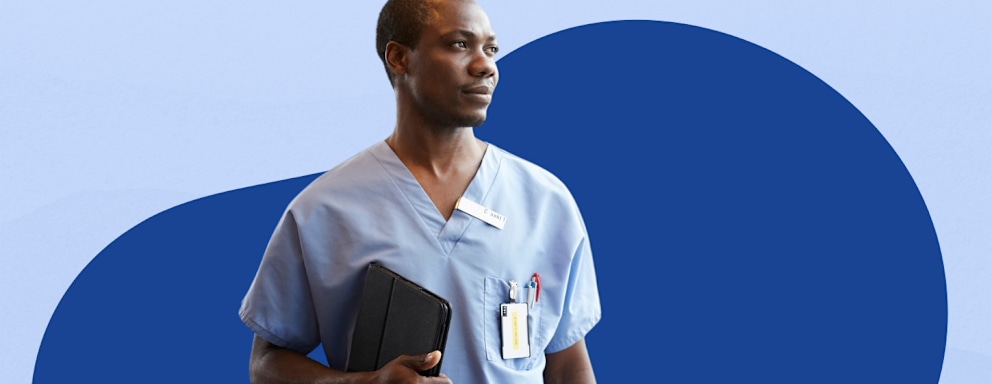How Technology Has Changed the Role of Nursing
 Credit: Maskot / Getty Images
Credit: Maskot / Getty ImagesAs healthcare technology evolves, nurses serve on the front lines of applying the latest advancements to serve their patients with increasing efficiency and effectiveness. In fact, by 2017, more than 95% of all hospitals in the U.S. had adopted certified electronic medical record (EMR) systems.
Technology continues to shift the nursing field in many ways, with the pace of change expected to increase with time. Read on to find information on how this will take shape, whether nurses can expect to be replaced by technology, and recent advancements and trends in healthcare.
How Does Technology Affect Nursing?
Monitoring
Portable monitors give nurses the freedom to check on patients quickly, even when occupied with other tasks. The devices provide data on vitals, such as respiratory rates, electrocardiography, and oxygen levels. Nurses receive an alert if a patient needs urgent attention, which significantly reduces response times.
Medications
Nurses in most healthcare settings no longer need to “make rounds” to monitor patients’ IVs, as smart pumps allow for the more accurate and efficient administration of medication and fluids. Nurses use this technology to set how much each patient should receive, while alerts notify them of low levels, poor patient reactions, or issues with tubing.
Health Records
Through the use of EMRs, nurses and other medical professionals can quickly access critical patient information and reduce or eliminate the need for paperwork. EMRs give nurses current data that notifies them as a patient’s condition changes and whether a patient has allergies to certain medications.
Beds
Smart beds allow nurses to monitor patients weight, movement, and vitals, which can help prevent bedsores, injuries, and misdiagnoses. Technology-enhanced beds also reduce the amount of time nurses spend on adjusting equipment and supplies for safety reasons. In addition to hospitals, increasing numbers of nursing homes use smart beds.
Reduced Errors
Technology considerably reduces the likelihood of error in logging patient information like allergies to medications, medical history, and health conditions and illnesses. Apps make the administration of medication much less confusing or prone to human error. This, in turn, improves health outcomes and reduces hospital readmission rates.
Communication
Today’s nurses use team collaboration tools, instant messaging, and headsets that allow them to communicate with their colleagues in real time. These tools make coordinating care much easier, as they reduce the time required to access test results, along with identifying and diagnosing illnesses. Improved communication also provides for more efficient patient handover between departments.
Telehealth
Patients can increasingly access medical professionals, including nurses, from the comfort of their homes, thanks to mobile apps. Nurses advise patients on many health concerns, while patients update their own data to the apps so that medical professionals can best monitor their conditions and overall health on a regular basis.
Can Nurses Be Replaced By Technology?
While technology poses no real risk of replacing nurses any time soon, nurses and all medical professionals will continue to incorporate ever-evolving technology into their daily routines. Nurses already commonly use EMR systems, wearable devices, and telemedicine to address their patients’ health needs.
Experts do not always agree on what the future of healthcare looks like, but nurses will continue to use machinery and artificial intelligence technology in ways that allow them to see more patients each day, administer medications more efficiently, and monitor conditions with complete confidence.
Recent Trends and Advancements in Nursing Careers
Technology continues to influence the nursing field and healthcare in some exciting ways.
For example, increasing numbers of hospitals have integrated what used to be multiple forms of communication into one streamlined system. Nurses wear headsets or badges that allow them to communicate with their colleagues in real time. These systems provide alerts in emergency situations and upload patient health data to EMR systems automatically.
Wearable technology allows nurses to scan barcodes on each patient’s bed to provide real-time data on vitals, medical history, medications, allergies, and test results. This allows for greater efficiency than the old method of filing, emailing, and charting patient information.
Hospitals also can now incorporate sensors and chips into mattresses, bedding, and blankets so that nurses and physicians can monitor patients’ movement, weight, blood pressure, and other key data. With time, this information can paint a fuller picture of a patient’s condition and progress.